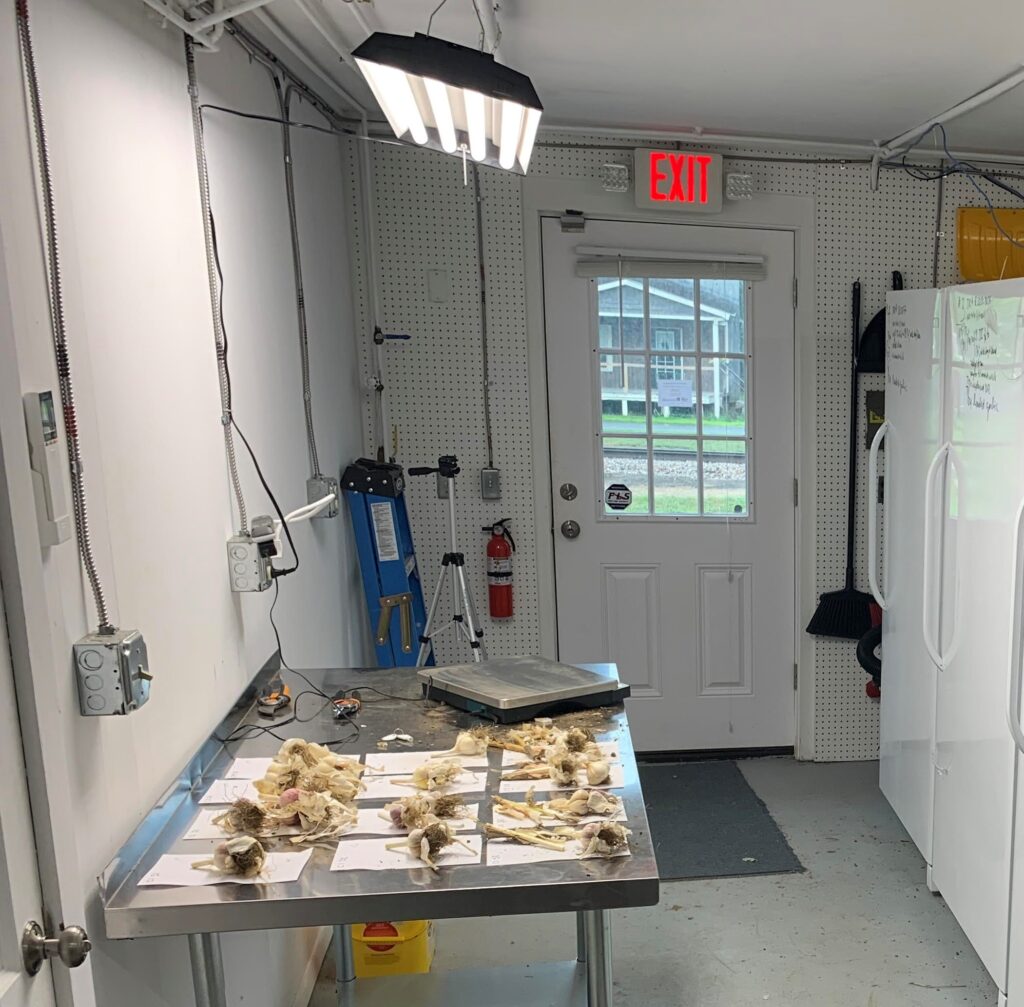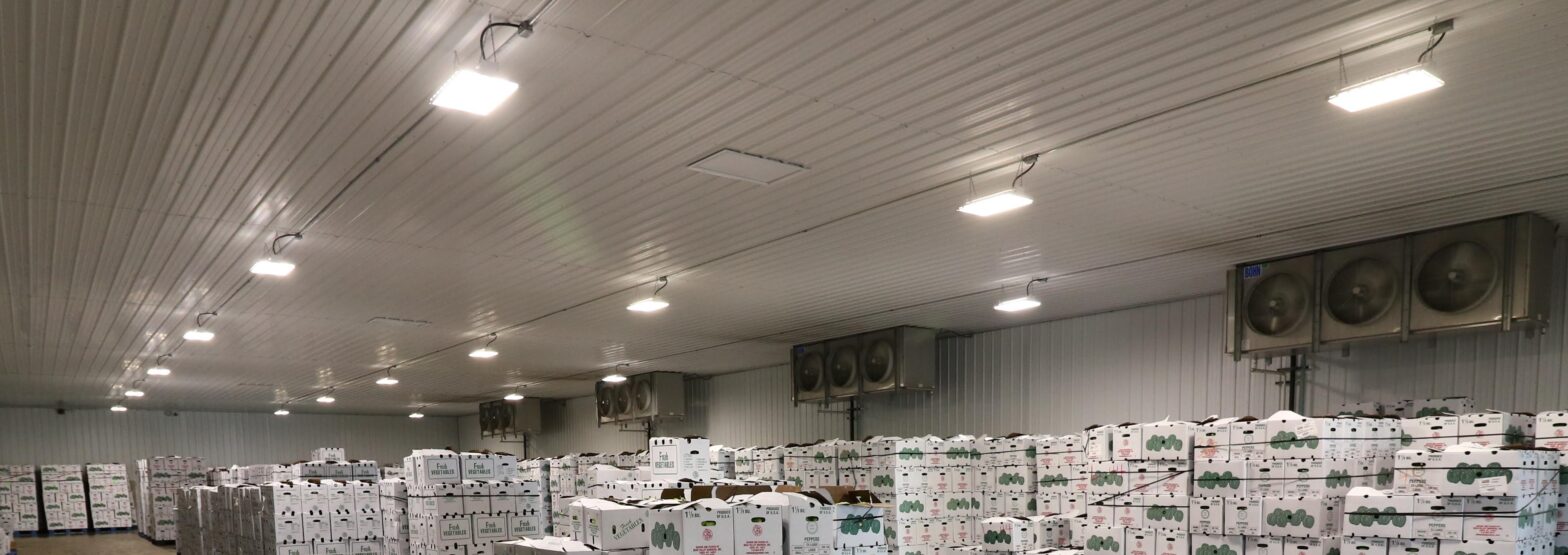As the days shorten and we turn the clocks back, it may be a great time to think about installing or improving lights in some of our indoor spaces. Maybe you could use a bit more light to see the drill size marking in the workshop. Or, perhaps, you’d like to be able to sort carrots better with a bit more visibility. Or, maybe that corner where you perch with the laptop and order forms could use some task lighting.
Regardless of the need, there are a few key things to consider when thinking about lights.
Natural Light: Healthy and Free!
The first thing to consider is whether you can provide some of your lighting needs naturally, using daylight. If you have a building already, perhaps consider moving the work area near an existing window. You could add windows, of course. Or, if you are planning a new construction project, consider the layout of the space and window placement to capitalize on natural lighting. Another option is clear or opaque roofing materials such as rigid, polycarbonate greenhouse panels or corrugated plastic roofing. Consider the need for shading in the summer and make use of passive solar design principles such as window height and roof overhangs to achieve this. Northern light, being diffuse, is generally preferred as work light and will naturally prevent overheating from direct sunlight.
Ratings – Lumens and Color Temperature
If you need to install lights, look for a light fixture (or bulb, or combination) with a detailed specification sheet or label. It should note both “lumens” and “color temperature” (in K). Lumens is a measure of the output intensity (how much light is emitted from the fixture). Color temperature is a measure of the visual quality of that light (how yellow or white or blue it is).
- Lumens = how much light
- Color Temperature = the color of the light
Sometimes a light fixture combines the fixture and a lamp in one assembly. Sometimes different lamps or bulbs can be swapped into the same fixture. The lumens and color temperature ratings are the result of the combination. A different bulb in the same fixture can result in different lumens output and a different color temperature.

How Many Lights Do I Need?
The number of lights needed depends on the activity being illuminated, the specific light fixture’s lumens, and the area or square footage of the space. Here are some guidelines.
| Activity or Use | lumens per ft2 of area |
| Walkways or hallways | 10 |
| Mechanical workshops or Office areas | 70 |
| Detailed mechanical work areas (work benches, near shop tools) | 90 |
| Fine mechanical work with small components, electronics work (fine adjustments, small parts, hard to reach locations, packing areas) | 180 |
| Visual inspection of low contrast items, small items, or for long periods of time (sorting produce, working with labels, reading lists, desk work) | 450 |
Example – General Lighting for a Multi-use Open Space
Let’s assume you have a 20 ft x 20 ft pole barn that has recently been closed in against the weather and you want to light it for general use. That’s 400 square feet (20 ft x 20 ft). This area is going to be used for general tasks that don’t involve a lot of close, detailed work. So we need about 70 lumens per square foot from the table above, or a total of 28,000 lumens (70 lumens / ft2 x 400 ft2).
This works out to about 5 of these high output 4ft LED fixtures (5200 lumens @ 4,000 K color) or 5 of these fluorescent fixtures with these bulbs (2 bulbs per fixture @ 2,850 per bulb = 5,700 lumens per fixture).
Example – Task Lighting for a Workbench
Let’s assume you have a 3 ft x 10 ft workbench or vegetable sorting belt where you do pretty detailed work for long periods of time. That works out to 30 square feet (30 ft x 10 ft). The amount of light we need, based on the table above is 450 lumens per square foot. So we need a total of 13,500 lumens (350 lumens / ft2 x 30 ft2).
This works out to about 2 of these high output 4 ft LED fixtures (7000 lumens @ 4000 K color).

What Light Color Temperature is Best?
Light color temperature can be a very subjective thing. It is measured in K, or “Kelvin”. Lower K values around 1000-3000 are generally perceived as more yellow or orange. Higher K values of 5000-9000 are generally perceived as more blue or white. “Natural daylight” at midday on a clear day is somewhere around 6500 K, but most people find this too white or even blue when it comes from an indoor light. This can be good for short-term, high visibility needs like inspecting something or making a fine adjustment. But, most people like lower light color temperatures for prolonged tasks like reading or for illuminating the space around a computer workstation which already has a display with a fairly high light color temperature.
You can get a better sense for what each color temperature on the Kelvin scale actually looks like in this post on Shutterstock.
Water and Shatter-proof Fixtures
It may also be important to consider covers and water-proof / shatter-proof fixtures over any places where crops and food are being handled or where you plan to be hosing down regularly. Shatter-proof fixtures help prevent mechanical adulteration or contamination of food. Waterproof and/or high humidity fixtures may be important in fruit and vegetable washing, packing, and storage areas where regular cleaning and sanitizing may be needed.
Acknowledgements
This resource was developed as part of the Food Safety Outreach Program under grant number 2020-70020-33003 from the USDA National Institute of Food and Agriculture and also funded, in part, by the USDA Northeast Sustainable Agriculture Research and Education program through award LNE19-375 and by the Food and Drug Administration through The Vermont Agency of Agriculture Food and Markets via the Integrated Extension Educational Programming in Support of the VAAFM Produce Program Grant 02200-FSMA-2018-01. The views expressed in the publication do not necessarily reflect the official policies of the U.S. Department of Agriculture, the U.S. Department of Health and Human Services or the Vermont Agency of Agriculture; nor does any mention of trade names, commercial practices, or organization imply endorsement by the United States Government or the State of Vermont. It is offered without regard to race, color, religion, sex, sexual orientation, gender identity, national origin, disability, protected veteran status, or any other category legally protected by federal or state law.
